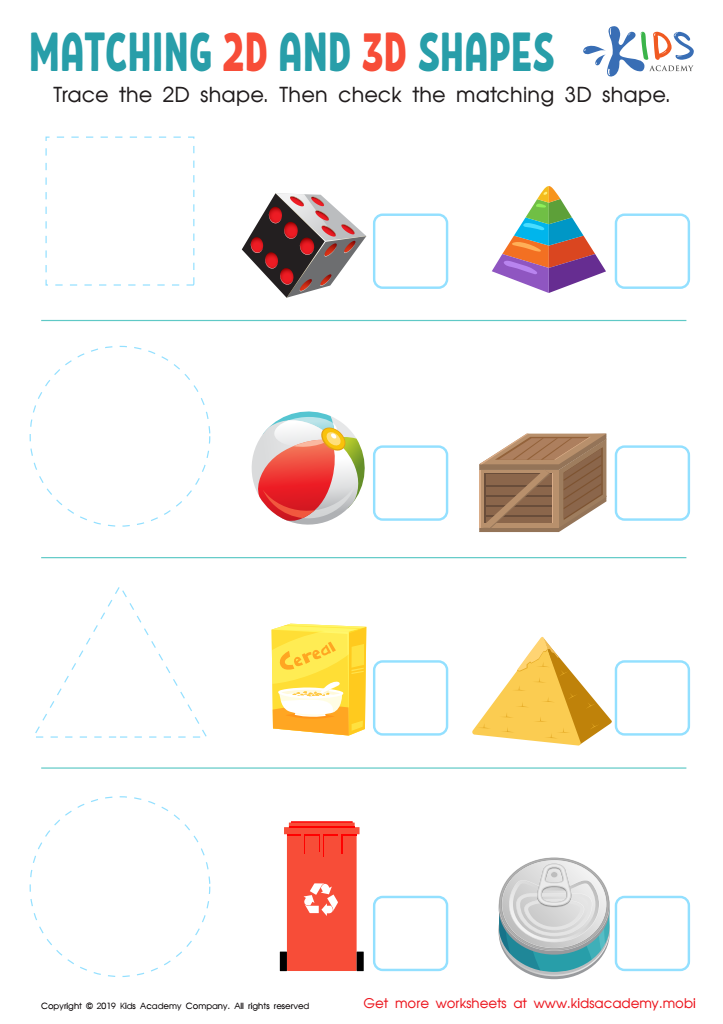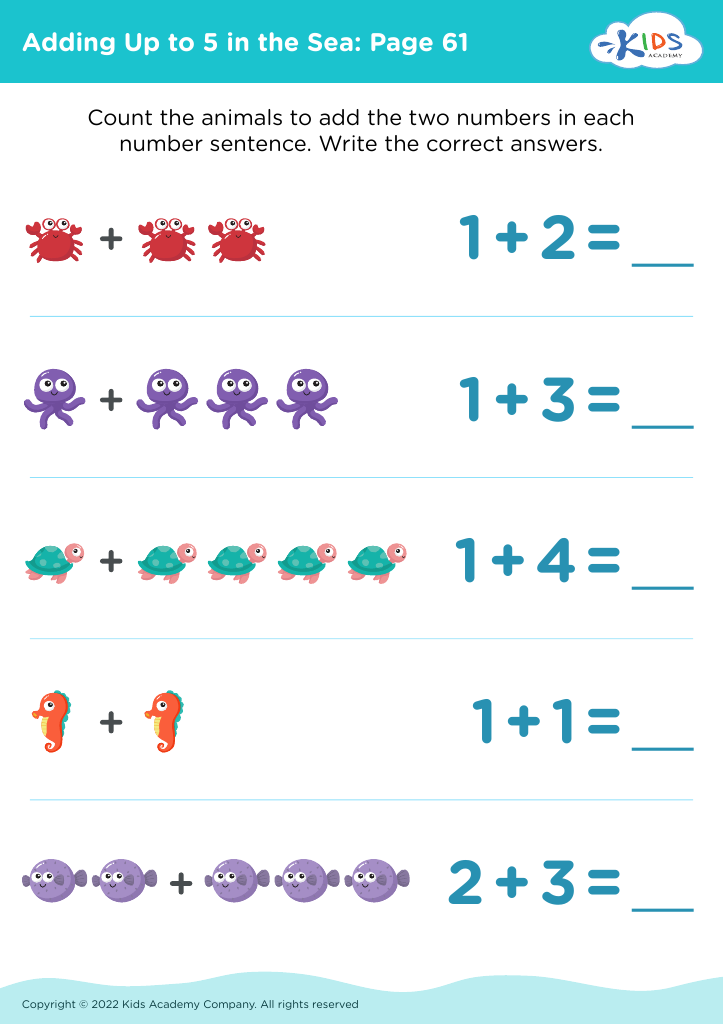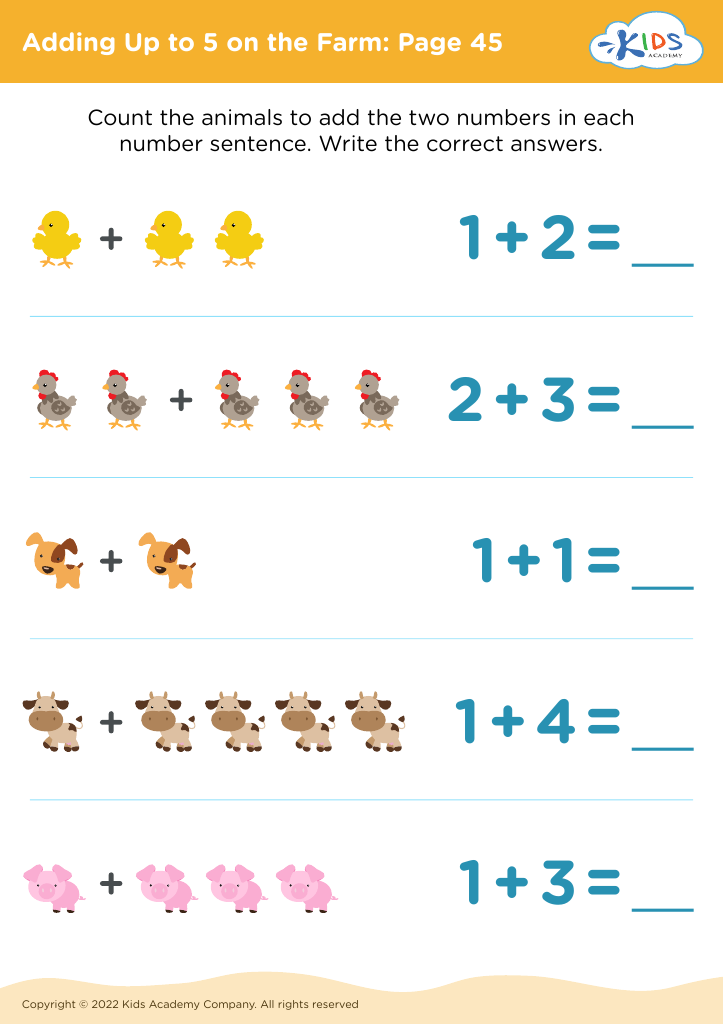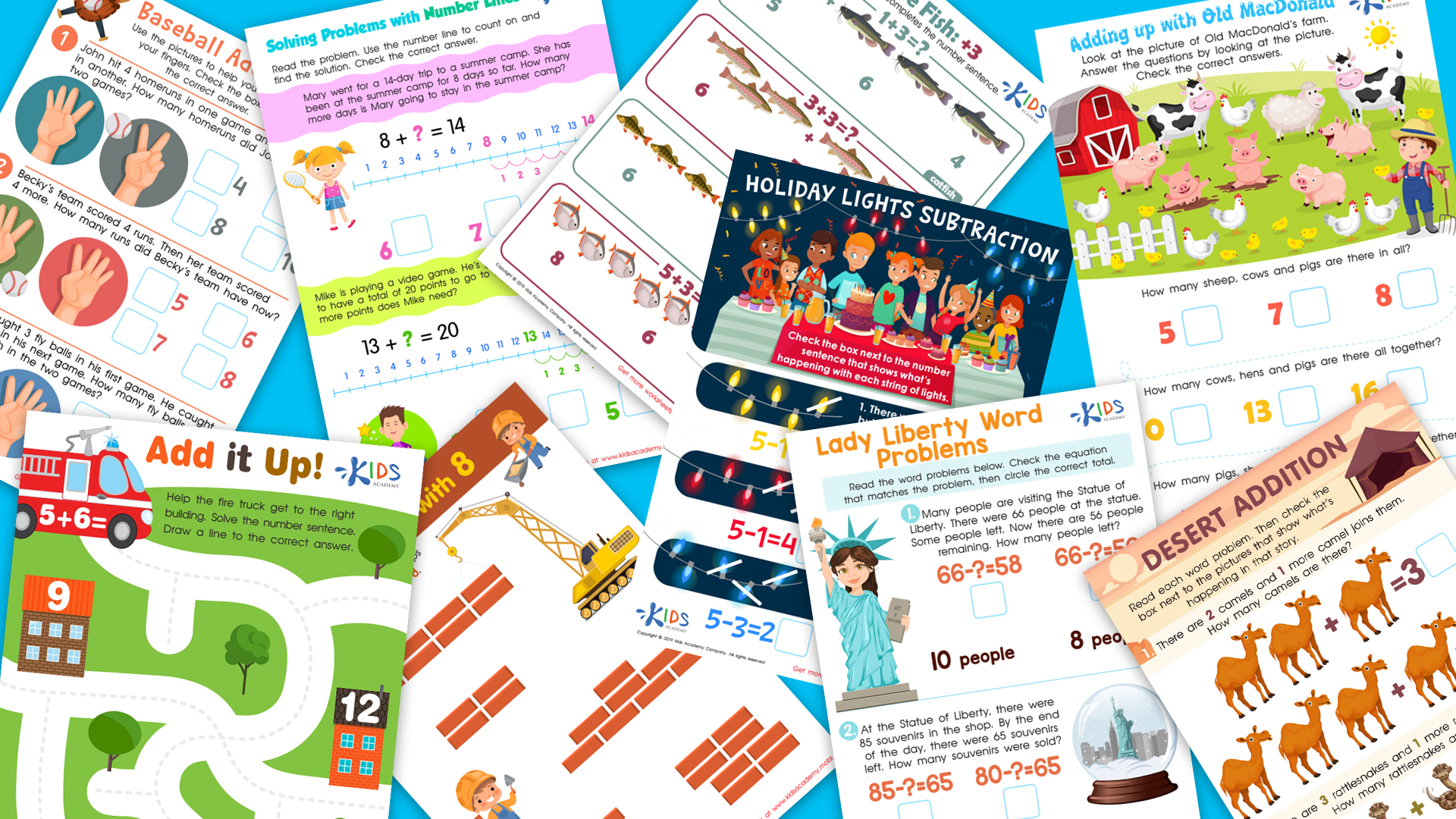Visual-motor skills Math Worksheets for Ages 4-6
4 filtered results
-
From - To
Enhance your child’s learning with our Visual-Motor Skills Math Worksheets tailored for ages 4-6. These engaging activities blend fun with foundational math concepts, promoting both cognitive and motor development. Carefully designed to develop hand-eye coordination, spatial awareness, and problem-solving skills, our worksheets ensure a stimulating and educational experience. Perfect for pre-kindergarten and kindergarten students, they help young learners effortlessly transition from basic counting to early arithmetic while honing essential visual-motor skills. Watch your child grow confident in math with our thoughtfully curated, age-appropriate resources. Download now and give your child a head start in math mastery!


Matching 2D and 3D Shapes Worksheet
Visual-motor skills are crucial for children aged 4-6 as they lay the groundwork for essential developmental milestones, including math proficiency. These skills refer to the coordination of visual perception and motor control, which are fundamental not only for everyday tasks but also for academic success.
In early math learning, visual-motor skills are directly linked to the ability to recognize shapes, understand spatial relationships, and perform tasks such as drawing numbers and symbols. When children write numbers and solve puzzles, they engage these skills to align their vision with their hand movements. Strengthening visual-motor coordination enhances children’s ability to grasp mathematical concepts like size, quantity, and spatial awareness, which are foundational for arithmetic and geometry.
Moreover, well-developed visual-motor skills aid in focusing and following instructions, which are critical for classroom activities. A child with strong visual-motor integration can better manipulate objects – handling tools like pencils with ease and precision.
Therefore, parents and teachers should be mindful of cultivating these skills through activities like drawing, cutting with scissors, playing with building blocks, and engaging in simple drawing or arts and crafts. Making these activities fun and integrated into daily routines lays a strong foundation, setting the stage for overall learning and academic achievement in math and beyond.



 Assign to My Students
Assign to My Students

















